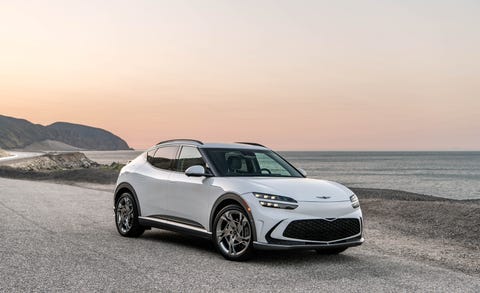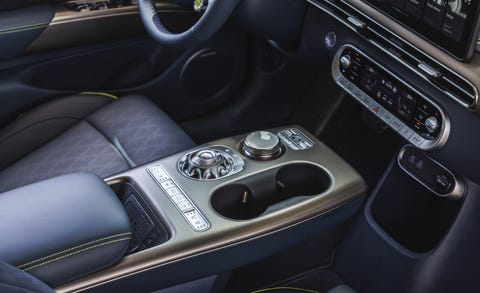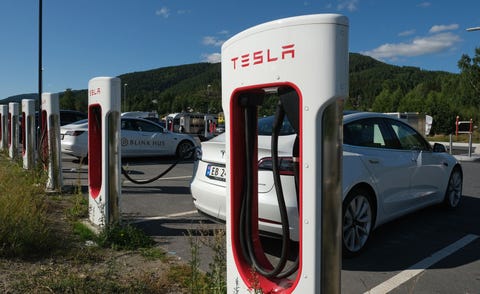
Illustration by Derek BaconCar and Driver
From the September 2022 issue of Car and Driver.
A few years ago, I made a $1000 reservation for a Tesla Model 3. I eventually canceled it, because I wanted the most basic, $35,000 iteration of the car and Tesla took so long getting around to making those that I gave up. But I like Tesla's products. The Model X is goofy futuristic, the Model 3 is great fun, and the Model S can still smoke exotics in a drag race. I've never driven the Model Y, because that one came out after Tesla launched its PR department into orbit on a SpaceX rocket, but I bet it's good too. So don't take this the wrong way, Tesla superfans, when I say that there could be trouble ahead for your favorite company.
Tesla enjoyed more than a few years with the EV market essentially all to itself, and for a while the established OEMs failed to take it seriously. But by building desirable EVs, and selling a million of them, Tesla showed the rest of the world that electric cars could be something more than dorky compliance-mobiles grudgingly offered to ham-radio enthusiasts. Now we have Rivians and Lucids, 1000-hp Hummers and 800-volt Hyundais, even a Ford F-150 EV that hits 60 mph in 4.0 seconds. Meanwhile, over at Tesla, we still have the aforementioned lineup. Back around 2014 or so, the smug confidence came from the likes of Mercedes-Benz, which still didn't see Tesla as a threat. Now it's coming from the other side, equally unwarranted.
I got to thinking about all of this when I climbed into a 2023 Genesis GV60 Performance and encountered its motorized glowing orb of a shifter (above), reminding me that Tesla doesn't have a monopoly on whimsy. The Genesis also has a beautifully wrought interior, an adapter to turn the charge port into an outlet, and a big button marked BOOST on the steering wheel. Press that and the GV60 goes from 429 to 483 horsepower for 10 seconds, which is hilarious every time. You can drive it forward and back using the key fob. You unlock it with your face. It can add 165 miles of its EPA range in 18 minutes—if you can find the rare DC fast-charger to do that. Which brings me to Tesla's remaining huge advantage: the Supercharger network.
It's sort of incredible that even now, after billions of dollars of investment, the non-Tesla DC fast-charging network is a mishmash of crud. If you want to take an EV road trip, it's easy in a Tesla and dicey in anything else. But this, again, is not some sort of magic that's permanently unknowable to every other company. Eventually, the other guys will have their Superchargers. And then, will Tesla still seem like a company that should be worth three times as much as Toyota?
Back when the Model 3 came out, I was trying Tesla's Autopilot driver-assist system in California, a Tesla employee riding alongside, when the car abruptly slowed down for no apparent reason. "It's doing that because it knows that there's usually traffic right here," she said, "even though there's not right now." I was less concerned with the car's dumb move than with the fact that it was presented as evidence that the system was actually very good and smart. This kind of thing is a window into a corporate culture where everyone is afraid to deliver bad news up the org chart, instead pretending that all is well in perpetuity. That's how you end up with, I don't know, yokes instead of steering wheels, or ditching radar in your driver-assistance systems, or letting a key model go 10 years without a redesign. Fear begets silence begets bad ideas.
Had I kept my reservation and bought the Model 3, I would probably have loved it. I would probably also be crunching numbers on its trade-in value toward a Hyundai Ioniq 5. Sure, the Model 3 is still cool. But it's just a car.
Bagikan Berita Ini

















0 Response to "Ezra Dyer: Tesla's New Reality - Car and Driver"
Post a Comment